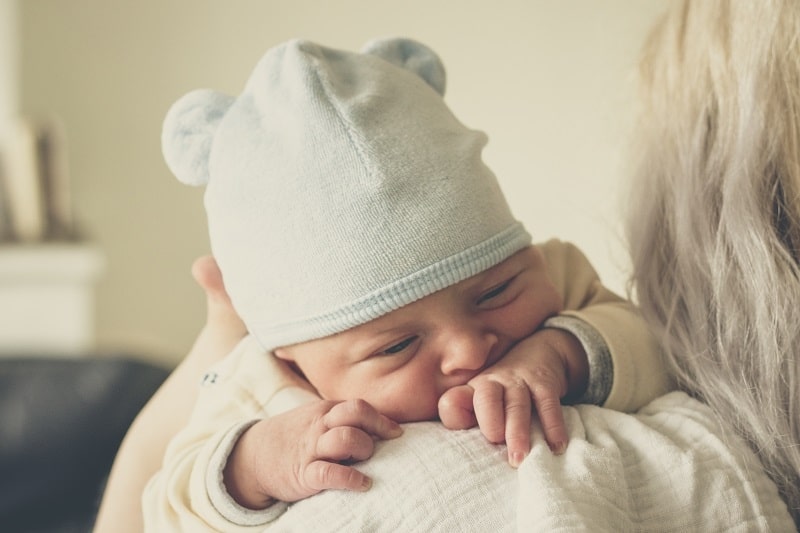How to Tell What Your Baby Wants When Crying
Baby Crying Sounds – What Do Different Cries Mean?
Babies make lots of different noises from giggles to grunts to baby babble. Most of the time, they're happily engrossed in their new world. When a need arises however, they have to let you know. The best way to do that is through crying, as it gets your attention every time!
New parents can find it challenging to understand what each crying sound means. You'll be relieved to know that babies actually have their own language and, interestingly, it's the same no matter where your baby was born. It's a universal baby language and the good news is that you can easily learn it.
The team atPetit Early Learning Journey has plenty of practice studying what each different sound signifies. We'd love to share what our research and experience has unearthed so that you too can learn to understand the different cries of your baby and meet any need they have.
Learning from the experts
In our studies, we came across Priscilla Dunstan, an Australian opera singer who createdDunstan Baby Language. She learned from newborns that the sounds a baby makes just before they cry can help us determine what they are trying to communicate.
Dunstan conducted eight years of worldwide research and discovered that every baby, of every race, colour and culture, makes one of five sounds before they start crying.
Dunstan has shared her technique with audiences around the world, appearing on shows like Oprah and 60 Minutes. She has a huge fan base of grateful parents, offers training sessions and even developed an app!
According to Dunstan, there are five basic sounds your baby makes just before crying:
- Neh – hunger
- Eh – upper wind (burp)
- Eairh – lower wind (gas)
- Heh – discomfort (hot, cold, wet)
- Owh – sleepiness
Let's look a little deeper into how you can interpret each different sound your baby makes. We'll also share some of the other observations we've made here atPetit Early Learning Journey. These will give you some more clues to help you understand what your crying baby is trying to tell you.
1. Neh – hunger
A baby uses the sound reflex 'Neh' to let you know they are hungry. The sound is produced when the sucking reflex is triggered and the tongue is pushed up on the roof of the mouth.
Our observation: Babies may also try to gnaw or suck at their hand or reach towards your breast (or in that general area). If your baby begins to cry, it's rhythmic and intense. As with all cries, the sooner you can give your baby attention, the quicker they will be to soothe and settle.

2. Eh –upper wind (burp)
The sound reflex 'Eh' means a baby needs to be burped. The distress is caused by a large bubble of air trapped in the chest. The baby responds to this with an 'Eh' sound in an attempt to release the trapped air through their mouth.
Our observation: A pained facial expression, squirming, kicking feet, shaking arms and moving hips are all indications that your baby needs to burp. Your baby may also turn away when you offer the other breast or some more bottle. It makes sense that they wouldn't want more of what's making them feel discomfort.
3. Eairh – lower wind (gas)
If a baby has flatulence or an upset tummy, they will use the sound reflex 'Eairh' to pass along that information. The sound comes when trapped air from a burp is unable to be released and travels to the stomach. Here the muscles of the intestines tighten to force the air bubble out. This sound may also mean that a bowel movement is in progress.
Our observation: If you miss the early sounds and your baby begins to cry, the crying will be very loud, intense and rhythmic. It will last until the wind has passed. Your baby may raise their legs to their tummy, arch their back and be generally fidgety. If a bowel movement is in progress, you child will bend their knees and bring their legs towards their torso to help the process along.

4. Heh – discomfort (hot, cold, wet)
Babies have the sound reflex 'Heh' when they're experiencing stress, discomfort or when they need a nappy change. This sound is triggered as a response to a skin reflex, such as a sweaty or itchy feeling.
Our observation: When a baby feels discomfort, their crying is usually mild and intermittent. The crying may increase in volume if you ignore it, so be sure you soothe your baby and quickly determine the cause of their discomfort.
5. Owh – sleepiness
Babies have the sound reflex 'Owh' to let you know they are feeling tired. It sounds similar to a yawn.
Our observation: If it's time for a nap, your baby may start rubbing their eyes. Their cry may start out slow and low and gradually build in tone and intensity. If your baby is exhausted, their cry can resemble the hunger cry. If you can catch the sounds before they cry, you will be able to tell the difference.

Better for you and your baby
If you take a moment to listen to the different sounds your baby makes before they cry, you will soon be able to decipher them. When you come to understand and respond to what your baby is trying to tell you, it will foster a strong bond and give your little one a deeper sense of comfort.
As Priscilla Dunstan says, "Stop. Open your ears. Listen. Your baby will love you for it."
At Petit Learning Journey, we provide a safe, warm environment to allow your baby to grow and explore while feeling secure and loved. We rejoice alongside parents in every little milestone as your baby develops. Pleasebook a tour of one of our beautiful centres and see how we can work together to help your baby blossom.
Related Posts
Book a free tour.
Submit this form and we will get in touch within 48 hours to schedule your tour.
How to Tell What Your Baby Wants When Crying
Source: https://www.petitjourney.com.au/understand-the-different-cries-of-your-baby/
0 Response to "How to Tell What Your Baby Wants When Crying"
Post a Comment